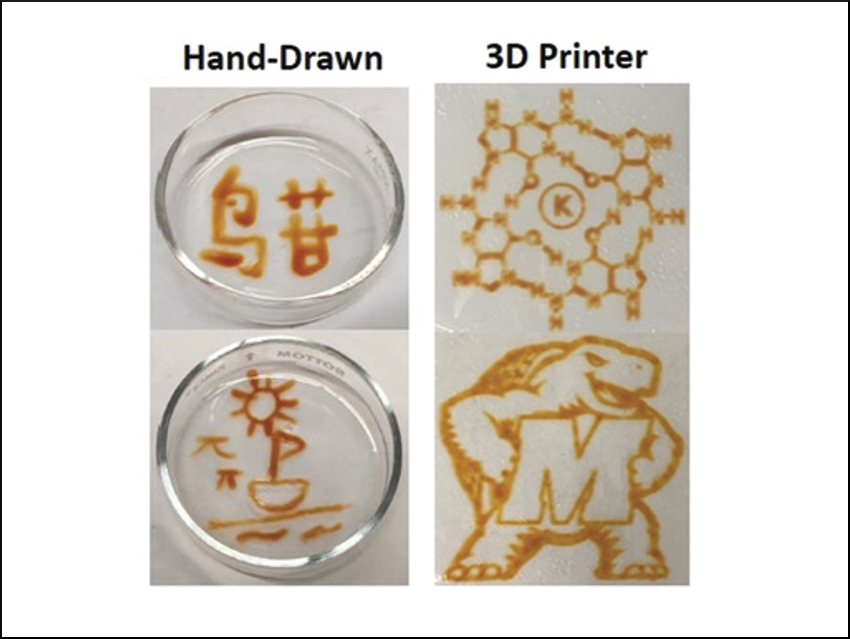Supramolecular hydrogels are water-filled materials containing low-molecular-weight solid compounds held together by non-covalent bonds. It is usually challenging to shape and pattern supramolecular hydrogels.
Jeffery T. Davis and colleagues, University of Maryland, College Park, USA, have developed a method for writing, reading, and erasing patterns on the surface of supramolecular hydrogels. The gels are synthesized by mixing guanosine analogues and potassium chloride in water, and they contain a network of hydroxamic acid (HA) sidechains. When HA binds Fe3+, an intense reddish color is produced (pictured below). Complex patterns can be drawn on the hydrogel surface with FeCl3 solution (examples pictured above). Since the HA–Fe3+ complex is fixed in place by the hydrogel, the colored images remain sharp even after a year.
Patterns can be erased with a solution of vitamin C, which reduces Fe3+ to Fe2+ and destroys the red HA–complex. All materials used are made from biocompatible products—the “paper” (guanosines and KCl), the “ink” (FeCl3), and the “eraser” (vitamin C). The researchers believe a wide variety of other gelators could be outfitted with HA sidechains to alter the resulting gels’ form and function.

- Drawing with Iron on a Gel Containing a Supramolecular Siderophore,
Songjun Xiao, Paul J. Paukstelis, Richard D. Ash, Peter Y. Zavalij, Jeffery T. Davis,
Angew. Chem. Int. Ed. 2019.
https://doi.org/10.1002/anie.201910872




